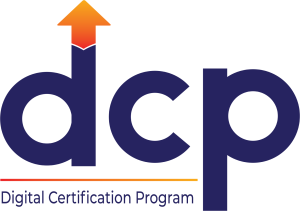The Digital Divide
According to the National Digital Inclusion Alliance definition, the digital divide is the gap between those who have affordable access, skills, and support to effectively engage online and those who do not. As technology constantly evolves, the digital divide prevents equal participation and opportunity in all parts of life, disproportionately affecting people of color, Indigenous peoples, households with low incomes, people with disabilities, people in rural areas, and older adults.
- Today, nearly 22 million (42%) older Americans do not have broadband access at home.
- Older Black and Latino adults are 2.5 and 3.3 times more likely to lack this vital service.
CWI Labs is confronting the systemic inequities related to age, gender, and race by developing solutions that address the needs of the job seekers and the skill requirements of local economies. One of the cornerstones of our current work is addressing the bias related to age and technology – that older job seeker doesn’t know and/or are unable to learn the technology of today.
Digital Inclusion
A recent study by the National Skills Coalition shows that across all industries 92% of jobs now require digital skills. Workers that qualify for jobs that require even one digital skill can earn an average of 23% more than in a job requiring no digital skills. Moving from a job requiring no digital skills to one requiring at least three can increase pay by an average of 45%.
As per the National Digital Inclusion Alliance definition, Digital Inclusion refers to the activities necessary to ensure that all individuals and communities, including the most disadvantaged, have access to and use of Information and Communication Technologies (ICTs). This includes five elements:
- Affordable, robust broadband internet service;
- Internet-enabled devices that meet the needs of the user;
- Access to digital literacy training;
- Quality technical support; and
- Applications and online content designed to enable and encourage self-sufficiency, participation and collaboration.
Digital Inclusion must evolve as technology advances. Digital Inclusion requires intentional strategies and investments to reduce and eliminate historical, institutional and structural barriers to access and use technology.
Participants will be provided with:
Equipment + Connection
A new laptop and accessories, so training equipment mirrors a workplace setting. And a new hot spot with 12 months of prepaid internet to ensure ongoing connectivity.
Digital Navigator
Weekly training including tailored lessons, pre and post skill-tested assessments, independent lesson practice, and access to a Digital Navigator for guidance and technical support.
Certifications
Skill-tested certifications in digital modules including computer basics, Microsoft Windows, Microsoft Office Suite (Word, Excel, PowerPoint), and career pathway based Capstone Practicum Project.
Postgraduate Career Services
Upon completing the Digital Certification Program, Job Seekers will retain all provided equipment, in addition to access to opportunities, including resume development, mock interviews, and career coaching.
Get in Touch for More Information
Feel free to reach out for more information! We welcome your inquiries and are here to assist you. We look forward to hearing from you!
Thank you to the NextFifty Initiative for their generous support of the DCP program

 The Digital Certification Program was created by CWI Labs to prepare older workers for the modern workplace while combating ageism. We have partnered with the National Digital Inclusion Alliance (NDIA) to offer data-driven solutions that will equip our job seekers with tools they need to thrive in the modern world of work
The Digital Certification Program was created by CWI Labs to prepare older workers for the modern workplace while combating ageism. We have partnered with the National Digital Inclusion Alliance (NDIA) to offer data-driven solutions that will equip our job seekers with tools they need to thrive in the modern world of work